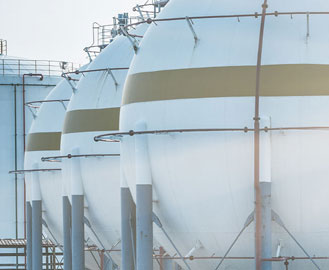-

- Bindicator
Energy Industry
The energy industry is constantly in the news, expanding and growing into different avenues all over the world, everyone vying to be the most efficient and effective. There is such variety within the power industry from fossil fuels, such as coal, oil and natural gas to the renewable energies of wind, water and nuclear power. In the global economy of the energy industry, knowledge is power, literally.
Application Detail
Renewable Energies
Renewable energies are power sources that are constantly replenished and will never run out; this includes solar, wind, biomass, hydrogen, geothermal, and hydropower. These energy sources, for the time being, do not have the need for bulk solid level indicators, but processes before and after the generation of power might.
Nature Gas & Oil
Natural gas and oil are major sources of electricity generation. Pipelines and tanks are the most common methods for holding and transporting natural gas and oil. Weight measurement, rather than level sensors, is used to determine the quantity of gas in a tank or vessel.
Coal Processing
Coal is one of the oldest forms of energy and can be extracted from countries all over the world. It has been used as a raw material for electricity since the 1880s and has been critical to the developing world as a power source. As coal is mined and excavated from the ground, it is commonly transported by rail to a processing plant. Once at the plant, the coal begins the process of transforming from a raw material to useable energy. During various part of the handling process, it becomes necessary to understand how much coal is being moved, and both point and continuous level products from Bindicator can assist with those details. Coal moves around on conveyors and stored at various times in large silos or bins. By understanding, how much coal is in any one location, spills can be avoided and the process can be more efficient.
- Ceramic probes and remote options of the VRF II Series are ideal for hot materials in precipitator hoppers handling fly ash
- Normally difficult to determine, the level of coal in large or open bins can be measured using through air radar
- Point Level Sensors including diaphragm switches can be used to provide high or low level fail-safes to avoid spills and shortages


Copyright © 2020 Venture Measurement Co. LLC